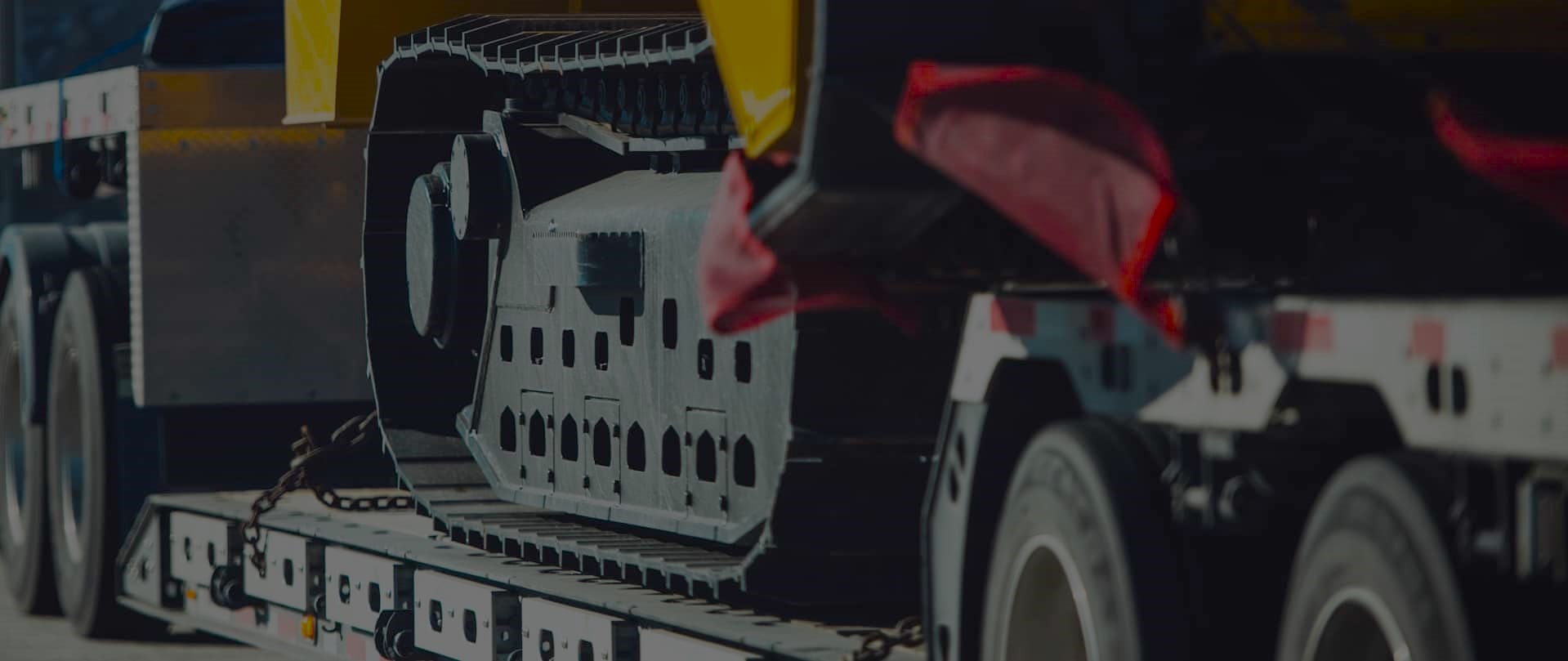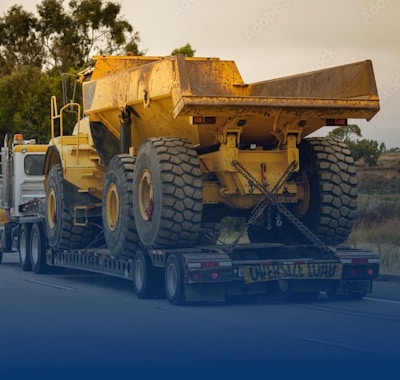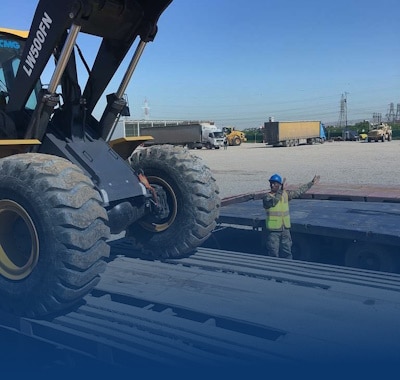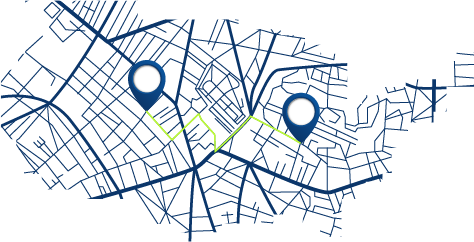Navigating Oversize Loads Across the Great Plains: Key Concerns
Freedom Heavy Haul can offer expedited Pickup and Delivery for any size shipment anywhere in the USA. Contact us today for No Hassle, No Pressure Pricing.
Moving an oversized load across long, sparse corridors starts with clear planning. Define weight, dimensions, and center of gravity up front so you pick proper equipment and avoid mid-route rework. Precise details keep shipping safe and on budget.
Route planning must match permits, surveys, and daylight rules rather than the shortest path to your destination. Legal baselines for width and height and per-axle limits vary by state; a few inches or pounds in the wrong spot can force escorts, detours, or extra freight cost.
Season and services shape logistics across Plains corridors. Spring thaw restrictions, high winds, and long gaps between fuel or repair options affect timing and safety checks. Visibility rules, flags, and amber lights are non-negotiable for larger profiles.
Start with compliance, visibility, and contingency thinking. That approach turns careful route planning into reliable delivery and lowers risk for heavy items on long hauls.
What makes the Great Plains unique for oversized freight today
Sparse corridors and shifting rules force more than simple route choice. State-by-state regulations set limits on axles, width, and travel hours. A permit in one state may name exact roads and require new documents at the border.
Services are thin along many routes. Long gaps mean fuel, rest, and repair stops must be scheduled to match vehicle range. That planning reduces the chance of delays or unsafe pulls to the roadside.
- Plan fueling and inspections to match your vehicle range and cargo needs.
- Expect paperwork and markings to change at state lines; prepare extra documents.
- Check visibility gear: flags, signs, and amber lights should be confirmed before departure.
Weather can force daylight-only movement and route changes. High winds, sudden rain, or cold fronts affect time windows and safety checks. Good logistics mix smooth roads with legal paths to protect items and meet delivery time targets.
| Factor | Impact on shipping | Planning action | Typical outcome |
|---|---|---|---|
| State rules | Varied size and axle limits | Obtain multi-state permits and route-specific approvals | Compliant journey across borders |
| Service gaps | Fewer fuel and repair points | Pre-book stops that fit turning and clearance needs | Lower risk of unscheduled halts |
| Weather & time | Daylight windows and wind limits | Build schedule buffers and monitor forecasts | Safer, on-time deliveries |
Top oversize load concerns when crossing the Great Plains
Long, rural stretches bring varied rules and quick changes that affect heavy shipments. Dimensions and weight can be legal in one jurisdiction and noncompliant a few miles later. Build a permit matrix that reconciles width, height, and per-axle limits before you move.
State rules and shifting size limits
Per-state thresholds vary. Many states set 8’6″ width and ~102″ height as defaults, yet per-axle weight caps can still force extra permits. Even an extra inch or a few hundred pounds may change required paperwork.
Construction, bridges, low wires, and tight turns
Active construction zones often narrow lanes or install temporary beams that reduce height. Pre-trip route surveys must verify bridge strength, wire clearances, and swing paths for wide turns.
Travel windows and seasonal risks
Daylight-only travel, curfews, and weekend limits compress ETAs. Spring thaw postings and severe weather can close corridors or add surcharges. Flag escorts and pilot cars are common near 12-foot widths; plan their times into your schedule.
| Issue | Impact | Action |
|---|---|---|
| Dimension shifts | Permit changes mid-route | Permit matrix |
| Construction | Reduced clearance | Real-time monitoring |
| Seasonal weather | Road restrictions | Alternate routing |
Permits, escorts, and markings: how to stay legal and visible
Getting permits and lining up escorts early saves days and avoids costly re-routes at state lines. Permits are issued per state and list exact routes; fees and turnaround vary from under $10 to several thousand dollars depending on size, season, and road type.
Obtaining multi-state permits and planning for timing and fees
Build a step-by-step process that applies to each state in critical-path order and confirms the same route across all permits. Budget for wide fee swings and add a contingency envelope so shipping estimates stay realistic.
When pilot cars and police or civilian escorts are required
Widths near 12 feet usually trigger one or two escorts. Escort work is often daylight-only and adds per-mile rates, hotel nights, and accessorials—factor these into freight cost and schedule.
Flags, amber lights, and signage for visibility and safety
Markings usually include red corner flags, “Oversized Load” signage, and amber lights on tractor or trailer. These items improve visibility and are commonly required on permits.
- Verify load disassembly rules — breakable items may disqualify oversize permits.
- Choose escort teams with route experience to reduce surprises at construction or low wires.
- Keep documentation exact: plates, dimensions, and axle spacing must match each application.
| Permit element | Typical impact | Planning action |
|---|---|---|
| Fees & timing | Cost variability | Build fee buffer |
| Escort needs | Schedule + hotels | Book by segment |
| Markings | Compliance & visibility | Stock and inspect gear |
Route planning like a pro: equipment, dimensions, and surveys
Good route planning begins by matching equipment to cargo geometry and permit realities. Start with exact dimensions, center of gravity, and desired transit speed versus cost. That foundation guides trailer choice and weight distribution.
Selecting the right trailer and distributing size and weight for compliance
Choose step-decks, RGNs, or multi-axle rigs to balance deck height and axle spacing. Proper equipment helps your load shipment clear low points and meet per-axle rules.
Adjust securement points and nudges in weight placement to keep permit needs minimal. A careful planning process can remove extra fees and reduce risk to cargo.
Pre-trip route surveys and contingency mapping to handle detours
Conduct formal surveys to document bridge clearances, wire heights, and turn radii. Those artifacts speed permit approvals and cut surprises on tight routes.
- Create two-tier maps: a primary route for daylight movement and a vetted contingency that matches dimensions.
- Pre-book large-footprint stops for fueling and rest to respect escort windows and avoid small access points.
- Keep a single source of truth with dimensions, equipment specs, and permits to streamline the shipment process.
Timing the journey: weather, seasons, and hours of service across the Plains
Good timing blends weather forecasts, permit windows, and driver hours into a single executable route plan. That mix reduces surprises and keeps shipments moving toward their destination.
Planning around spring thaw and freeze-thaw cycles
Spring thaw postings can restrict heavy routes or add fees in northern states. Build a seasonal calendar that flags fragile road dates and alternate corridors ahead of movement.
If a route shows frost laws or weight limits, switch to approved paths early. That avoids detours and expensive re-permits.
Navigating daylight limits, weekend and holiday restrictions
Many permits allow travel 30 minutes before sunrise to 30 minutes after sunset, Monday through Friday. Align driver hours with those brackets and plan shorter legs to prevent being stranded after dark.
Also expect weekend and holiday cutoffs at state lines. Synchronize crossing points so you don’t idle at a border waiting for an opening.
Storm-readiness for winds, hail, ice, and distant hurricanes
High winds and hail can force pauses on exposed roads; tall profiles are vulnerable to side forces. Prepare a storm playbook with pre-approved alternates and securement checks after gusty segments.
Monitor connecting corridor advisories daily. Hurricane season can close southern links and ripple delays into inland routes, so keep ETA buffers and communicate changes to crews and receiving teams.
- Seasonal planning: Build calendars for thaw, ice, and wind events.
- HOS alignment: Match legs to daylight permit windows and driver limits.
- Storm playbooks: Pre-authorize alternates and schedule extra cargo inspections.
| Timing factor | Impact | Action |
|---|---|---|
| Spring thaw / frost laws | Route restrictions or surcharges | Flag dates; pre-plan alternates |
| Daylight permit windows | Limited travel times | Sync HOS; short daily legs |
| Severe weather / hurricanes | Corridor closures | Storm playbooks; ETA buffers |
Turning planning into performance with the right shipping partner
Choose a shipping partner with in-house permitting, surveys, and route vetting so you may find faster approvals and fewer handoffs. Experienced teams speed permit issuance, apply proper equipment, and map compliant routes that avoid surprises.
Rely on a partner that uses a modern TMS to keep logistics visible from quote to delivery. Clear milestones, document packets, and ETA updates reduce friction and help protect cargo and shipment timelines. Expect a strong, documented process for dimensions, securement, and site needs at origin and destination.
Contract with providers that align KPIs to on-time performance, permit accuracy, and no-damage freight. That commitment turns planning into reliable execution for oversized freight and other critical shipments.







